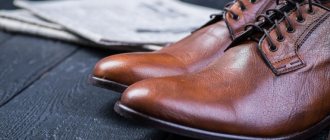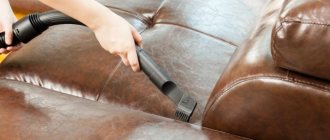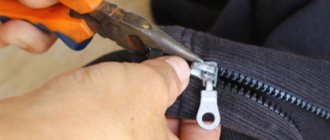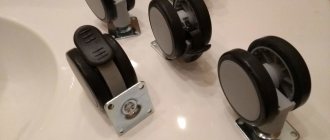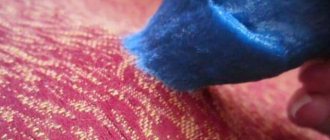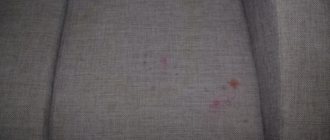Many people prefer leather sofas. They look very beautiful in any room, adding chic. But, during operation, they very quickly lose their aesthetic appearance. Then people start wondering how to repair a leather sofa? The restoration is actually quite simple, it all depends on the degree of damage to the leatherette or genuine leather. In any case, you should have a lot of patience to fix the sofa yourself, because the procedure requires a lot of time.
In most cases, if the leather has burst, peeling has appeared, or holes have to be repaired, they decide to reupholster the sofa with new leather, or simply write it off and send it to scrap. Yes, it’s easier to buy a new thing, but it’s worth remembering that it costs a lot of money, but restoring it will cost several times less.
Remember that a leather sofa is very finicky and has its pros and cons. Before choosing this model for yourself, read the information on how to properly care for it so that it can last longer.
Scratches, cracks, holes on a leather sofa: how to fix
Before choosing a way to repair a leather sofa, it is worth finding out what material the furniture is made of and how great the degree of damage is.
Different types of leather upholstery for upholstered furniture require different approaches. For furniture, pigmented, aniline leather and split leather are used.
- Pigmented is the most popular. It is durable, scratch-resistant, and does not absorb liquids.
- Aniline leather has no protective coating and retains its natural texture. This is an expensive, high-quality, and therefore rare material.
- Split leather is a cut inner layer of low quality leather, which is coated on the outside with a protective polyurethane coating.
Repair and restoration methods are chosen depending on the depth of damage. In case of minor abrasions or scratches on pigmented leather, the damage can simply be covered with a special paint for natural leather material.
If only the surface layer of the upholstery is damaged, you can use a color-matched permanent marker for masking. The material is first cleaned and dried, then the scratch is painted over several times. You can use clear nail polish, vegetable oil, lanolin, but the results will not last long.
Aniline leather and split leather can be restored using the thermal method. Cover the scratch with a damp cloth and heat it with a hairdryer or warm iron, applying it for 10 seconds. When exposed to heat, the leather covering will give up its natural oils and pigment, and the scratch will be filled.
If the inner layer of the material is also damaged, use the “liquid skin” product. The most radical method of repair is to reupholster a sofa or chair with your own hands.
Cleaning stains on leather surfaces
While there may not be many serious defects on the surface of leather sofas, absolutely no one is immune from stains and they appear on the upholstery with enviable frequency. Fresh or old contamination must be cleaned in any case.
Using some tricks for cleaning leather surfaces will greatly facilitate the process and have a beneficial effect on the surface itself.
Here are some current examples from life:
| What we clean: | What we clean with: |
| Spilled coffee or sweet tea | Using a circular motion using a solution of vodka or diluted ammonia |
| Dried chocolate | With a soft cloth soaked in glycerin |
| Lipstick or foundation | With diluted alcohol |
| Ink | Dilute alcohol or citric acid solution |
| Oil | Gasoline (be sure to wear gloves) Cover with talcum powder and after absorption, wipe with a dry cloth |
It is worth noting that you can remove stains on a light leather sofa using milk and egg white. And if you need to remove heavy dirt from any leather surface, you can purchase specialized products. Of course, their price tag is often inflated due to the increased need, but it is clearly less than the amount for buying new furniture.
Advice:
To prevent pollutants from penetrating deep into the upholstery, fresh stains must be removed in a timely manner. If the contamination turns out to be ingrained, and the above remedies did not save the situation, repeat the procedure several more times after the surface has completely dried. This method is more effective than, for example, using abrasive or caustic chemicals. They can permanently ruin the surface, but never achieve results.
An effective way to remove contaminants is to call specialists from cleaning companies. The pleasure is not cheap, but the result is worth it. The furniture will look like new after their work.
Required materials and tools
Restoring leather sofas begins with assessing the extent of damage. Depending on this, materials and tools for work are selected.
To repair cracks, you will need paint for leather surfaces, possibly “liquid leather”, which restores the integrity of the material. To apply patches or appliqués, you need glue for leather products, pieces of natural material or eco-leather, matching the color of the upholstery or multi-colored, depending on the idea of the composition, thread and needles.
If the repair involves partial or complete replacement of the upholstery, you will need a cloth of the required size and special tools: screwdrivers, keys, screwdriver, pliers, stapler and anti-stapler. When reupholstering furniture, you need a sealant - foam rubber or padding polyester.
Creative solution - mosaic
Mosaics can be used not only for walls, but also for furniture decoration. It has a self-adhesive base, so it is very convenient even for beginners. Before updating the upholstery, it is secured with a construction stapler so that the base is strong. After this, worn-out parts of the furniture are sealed with a plain mosaic or a picture with any ornament.
Did you like the article? Then support us, click
:
Leather is an expensive and demanding material that requires careful treatment, proper microclimate and special care. Repairing leather furniture is trusted to professionals, but minor damage, scuffs and stains can be dealt with yourself.
Similar articles:
How to restore an old cabinet with your own hands DIY chair restoration DIY furniture painting Do-it-yourself restoration of upholstered furniture
Repair and restoration methods
There are various ways to restore a leather sofa. Depending on the area and depth of damage, the leather can be repainted, replaced or repaired. It is best to restore furniture made from this material using special means.
Painting, color restoration and removal of scuffs
The most affordable do-it-yourself restoration of leather furniture is partial or complete painting of the coating. It allows you to cosmetically update furniture while the upholstery is not yet torn, or completely change its color. The paint must be intended for leather. Dyes can be mixed with each other to obtain the desired shade.
Before work, you need to carefully prepare the surface. It needs to be cleaned of dust and degreased with acetone. Then we restore the damage step by step:
- To make the paint go on more evenly, the coating is evenly moistened with water using a sprayer.
- We apply paint. The upholstery should be treated gradually, in small sections. Liquid paint is rubbed into the skin with a swab, rag or sponge. The aerosol is applied by holding the can at the same distance from the surface.
- It may be necessary to apply the paint several times (from 3 to 6) to obtain the desired result, allowing each layer to dry thoroughly for 1-2 hours. You can speed up drying with a household hairdryer.
- The upholstery is wiped with a dry cloth, removing excess dye after each layer.
- The last thing to apply is a protective layer. It can have a glossy or matte surface.
How to seal a leather sofa
Holes on a leather sofa can be sealed. This method is only suitable for eliminating small cuts and cracks, the edges of which are pulled together. You need to use glue designed for working with leather, preferably water-based.
The surface is first degreased, glue is applied with a toothpick or match and the edges of the damage are tightly compressed. Excess adhesive is immediately and carefully removed. The edges can first be tightened with synthetic thread, which is removed after the glue has dried. In this case, the restoration of the leather product is completed by polishing and painting the gluing area.
If you need to seal a large hole on the sofa, use patches. Restoring a leather sofa with a hole involves cutting and gluing a piece of leather larger than the damage to the back of the upholstery. The patch has a round shape.
Liquid skin
Minor repairs to leather furniture items are carried out using liquid leather. This is a polymer mixture with the addition of rubber resin based on alcohol and water. By adhering to the base, the substance acquires strength and elasticity and does not crack. Dye is added to the mixture.
The choice of colors is quite wide. Due to its composition, “liquid leather” is suitable for repairing artificial leather, but the result will be less reliable than with natural material.
Repair of leather sofas with “liquid leather” is carried out as follows:
- The area is degreased with an organic solvent.
- The edges of the damage are sanded until smooth.
- Fill the crack with the product and leave for 2 hours. Deep damage is filled in several stages.
- Sand irregularities on the aggregate with 800 grit wet sandpaper.
- The color is evened out using paint or shoe polish
If the damage is too deep, it is duplicated from the inside out by gluing a patch. Then filled with liquid skin. The protruding edges of the damage can be pre-glued or stitched, and only masked with liquid leather. Over time, the layer of product is updated.
Padding
If it is no longer possible to restore the surface of the leather, the upholstery is replaced partially or completely. For example, if only the upholstery and the seat are worn out on a chair, the backrest can be left unchanged.
In this case, it is important to soberly assess the condition of the skin. If the piece of furniture has peeled off in different places, the upholstery is changed completely, but this is somewhat more complicated. Reupholstering leather furniture is not an easy process. It allows you to update not only the furniture, but the entire interior if you choose a different color or style.
Major repairs of leather furniture begin with dismantling. The furniture is disassembled, the upholstery is removed from the base, the spring blocks are replaced, and the old upholstery is carefully ripped apart to obtain patterns. Replacement material must be taken in reserve. Allowances are left up to 10 cm.
The procedure is as follows:
- The foam rubber is cut to the size of the parts and attached to the frame using a stapler. By making cushions from foam rubber or synthetic padding, you can slightly modify the shape of the legs and back.
- We sew the upholstery parts into one product. To assemble leather parts, you will need a sewing machine capable of sewing leather and reinforced threads.
- We stretch the upholstery from the middle to the edges and secure it with a stapler from the wrong side. The material is pulled carefully, evenly distributing the folds in the corners. The upholstery should not be overtightened, otherwise it may burst.
Overlays
Restoration of leather furniture is also carried out using overlays. This method changes the appearance of the furniture, since the part is placed on the front side of the upholstery. The overlays can be the same color or successfully disguised with paint, or they can be an applique of leather of different colors.
If the furniture was recently purchased, most manufacturers can provide a sample of upholstery repair material upon request. If this is not possible, you must select the material yourself. The overlay can be sewn or glued. The threads leave traces, so an error during operation can worsen the appearance of the product.
Replacement of accessories
A major restoration of a sofa made of leatherette or genuine leather is accompanied by the replacement of fittings, which during operation are subject to chemical and physical attack, break, wear out, and lose their appearance. Springs, furniture supports, couplers, armrests, and decorative elements are replaced.
There is no point in repairing these components. It is easier to replace them with others, in most cases more reliable and cutting-edge.
Repairing a sofa is not complete without replacing the locks, the steel mechanism of which becomes loose over time, plays appear in it, and springs fly off. Since major repairs of furniture are carried out infrequently, it is better to update the locks, even if they can be repaired.
Tips for proper use
How to choose a leather sofa so that you don’t have to try to figure out how to restore it later? In this case, you should pay attention to the quality of the material. It should be soft, smooth, without visible cracks or scratches. Sofas last a very long time if you care for them properly. Ideally, they can be covered with a cape or cover if you plan to spend a lot of time on it. The sofa will not crack if you regularly wipe it with a damp cloth, removing dirt and dust.
It is quite possible to restore a leather sofa at home, the main thing is to have patience and time. With proper care of eco-leather, the model will serve you for many years. But if the damage is very noticeable, or one of the mechanisms is damaged, it makes sense to seek help from professionals. If you solve such issues without proper experience, you can damage the furniture even more.
Leather interior is always a sign of high style, presentability, and solidity. The material is a mandatory attribute of expensive foreign cars and creates an individual style for the vehicle. During use, the upholstery gradually loses its newness, becomes smudged, cracks and minor defects appear. If you need interior leather repairs, do not rush to contact expensive workshops.
This procedure can be easily handled in a garage environment if you know the correct procedure.
Faux leather
Artificial leather, which in our era of environmental materials has received the beautiful name “eco-leather,” wears out much faster than natural leather. And it is restored by approximately the same means. Special compositions for the restoration of artificial leather are usually based on non-woven material. Before you start using them, you should cut off all the threads sticking out around the break that this material contains.
Cuts
With cuts it is not as simple as with scratches, although it is also possible to correct the situation. All layers of the skin are affected here, right down to the foam. In this case, not only glue, but also a patch will be useful.
Important! The patch will be applied from the inside, so its color does not really matter. It can be either a piece of leather or any other dense elastic material.
- You need to carefully tuck the patch under the incision using tweezers and a nail file or other handy tool. The patch must be larger in size than the defect.
- If there are any fibers sticking out at the edges of the cut, carefully trim them away.
- After this, use a toothpick to apply an even layer of glue to the inner surface of the skin around the cut and gently press the skin onto the patch, carefully aligning the edges.
Important! To avoid pressing down with your hand for a long time, place a weight on this place for an hour.

